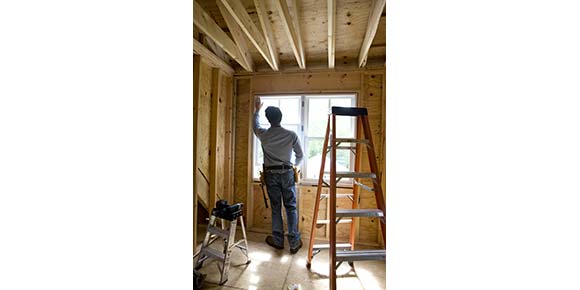Not surprisingly, since Winnipeg has some of the oldest housing stock in the nation, it has been a hotbed for home renovations, and Canada is not far behind.
A survey by Altus Group, a leading national housing market consultant company, showed Canadians spent $68 billion on renovations last year, which was $20 billion more than what was expended on new houses. Whatever trends you want to refer to, whether it be all of the popular TV shows which transform a home before your very eyes in the span of an hour, renovations make sense beyond just enjoying the fruits of your labour or that of a professional you hired to do the repairs, alterations or improvements.
And let’s not forget historically low mortgage rates, which make payments lower for owners when they do renew. The rates give them room to plug some of those savings back into maintaining and improving their home. If done right, this is an investment that will pay off when you do go to sell your home.
The following is a refresher on some of the key things you need to keep in mind when budgeting and planning for a home renovation. The information is sourced from the 2015 Home Renovations Guide which is published by HarrisonBowker Real Estate Appraisers. They consulted heavily with the Appraisal Institute of Canada and other industry professionals.
Inevitably, you should always budget for contingencies, as issues do arise due to unforeseen circumstances that may cause the completion timeframe to be extended and result in higher costs. You may want to put aside as much as 15 per cent more to account for unexpected expenses.
Immediately paying by the hour plus materials is not recommended. This is fraught with potential problems, since there is no incentive for the contractor to complete the job nor do it in a timely and efficient manner.
On the other hand, if there are legitimate changes to what has to be done in the original agreed upon contract (i.e., you may wish to do an upgrade on flooring or countertops), it is only reasonable to expect to pay extra for the change.
First in importance, if deficient in what you want or future buyers will expect, is the kitchen.
According to the 2015 Home Renovations Guide, about 10 to 15 per cent of the overall value of the home should be spent on the kitchen. If you don’t plan on selling for another five years, spending 15 to 25 per cent more on it today will give you about a 45 per cent higher return, depending on the quality of the renovations. For example, buyers need a functionally-designed, spacious, low-maintenance kitchen. Scratch-resistant, durable materials, such as granite countertops and high-quality appliances, add tremendous value and have timeless appeal.
Bathrooms can return from 75 to 90 per cent of your investment and possibly higher, depending on how well the renovation is done. It may even require a complete relocation of fixtures and/or walls. There is much you can do here to make it more appealing and eye-catching. Examples include new tiles from floor to ceiling, light fixtures, cabinetry, and a well-designed, but still functional, sink. Double sinks are popular in ensuites.
Another good return on your investment is putting your renovation dollars and effort into floors and walls. The guide states “smooth walls with tasteful, neutral paints will make spaces seem larger and will give an 80 to 110 per cent recapture.”
Hardwoods and tile flooring which hold fewer allergens are desirable. However, quality carpet with a proper underlay can also create an appealing look, too. A key strategy and design theme here is to make sure you do a good job of integrating the flow of your flooring from room to room. How well does it fit with the baseboards, cabinetry, walls and furniture? Expectations on return of investment can be from 60 to 80 per cent.
You need to spend money to get the result you desire and the return that can be expected if the renovation work is professionally done. According to the renovation guide: “Quality craftsmanship is key. Nothing is more costly than having to do something twice or replace something early. The importance of using the highest quality materials and reputable contractors cannot be stressed enough.”
In Winnipeg with its very competitive market — buyers have so many MLS® listings to choose from (just check out winnipegrealestatenews.com to see for yourself) — it’s absolutely essential for any homeowner to call a REALTOR® and ask them for an honest evaluation of what they should be doing to prepare their home in the event that they will be planning to sell it.
REALTORS® know what today’s buyers should be looking for in terms of materials and styles. Moreover, they see first-hand how a buyer will react when a house is not meeting their expectations. They can also tell you if you are going too far in a major renovation when contemplating a resale.
The renovations guide also includes a list of what you can expect in percentage return terms for any renovation you are considering, inside or outside the home.
The 2015 Home Renovations Guide can be found on the front page of the HarrisonBowker Real Estate Appraisers website: www.harrisonbowker.com



